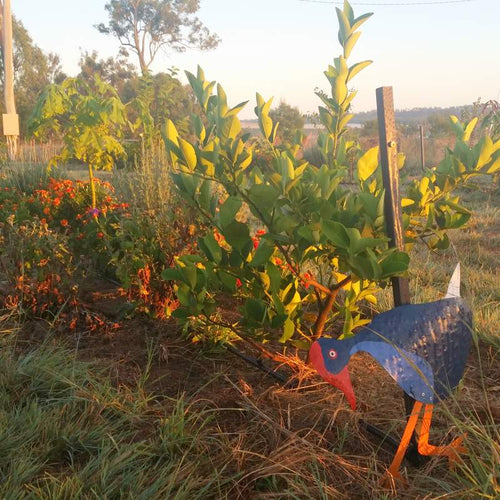How I use herbs - Elderflower
I haven't written a "how I use herbs" post for a while, but my herb garden is still growing in the shade of the carport and increasing in number of herbs (although some have also unfortunately died, but I will start them again). Our local produce share has been a great source of herb cuttings and I've had to talk myself out of taking more home as I really can't increase the number of pots in my garden until I get something more permanent organised.
I was given a small elderflower plant at the produce share a few months ago and I have been growing it up until its ready to plant out. I thought I better find out more about its preferred growing conditions and medicinal uses before I decide where to put it. There are several varieties of Elder (genus: Sambucus), and as usual I don’t know which one I have, but they all look to be fairly similar and when I see the colour of the berries, that might help to identify it. I think from the fact that it was a sucker from a larger plant, it must be the American Elder Sambucus canadensis which is apparently more common in Australia than the European Elder Sambucus nigra, which tends to form a single trunk. All of this is good to know before I plant it somewhere!
There is also considerable European folklore around elder, including a belief that chopping down a tree would release the Elder Mother. Another reason to pant carefully for those who are superstitious!
How to Grow Elderberry
The plant can grow into a large bushy tree and is also used as a hedge plant. It spreads by growing suckers around the base (the plant I received was a sucker from a larger plant). It can also be propagated from cuttings or seed. It grows in full sun, but it also doesn’t mind shade. I can see from having it grow in a pot so far that it uses a lot of water, so my main issue when I plant it out will be keeping the soil moist enough until it can establish deep roots.
How to Use Elderberry
- The flowers can be made into a syrup or cordial, they can also be dried - used for coughs, colds and flu, to reduce fever. Can also help with hayfever.
- The berries (cooked) can also be made into a syrup or dried. The anthocyanins (purple compounds in the berries) have been shown to reduce symptoms of flu by anti-viral action. They are also rich in vitamin C.
- Externally, a tea from elderflowers can be used to sooth the skin
- The leaves can be infused in water, or oils to make a salve, which is used for soothing or healing skin.
- In some elder species all parts are poisonous is eaten raw, apart from the flowers. The berries are ok if they are cooked. As I don't know for sure which species I have, I will be cooking the berries.
My plant is currently flowering, so I'm looking forward to making use of some of the flowers, but I'll leave some to form berries as well. I'm keen to plant it where it can grow up to shade the dog yard and its free to spread along the fence line into a hedge/shrub. If it gets huge, at least its very useful!
Have you grown Elderberry? How do you use it?
These are the books I use to research herbs:
Previous herb posts on Eight Acres:
























I would love to be able to grow Elderberry but doubt that I can in Tropical although if I can find a plant I might give it a go. I love the flavour of the cordials. Good luck with the move. Pauline
Leave a comment